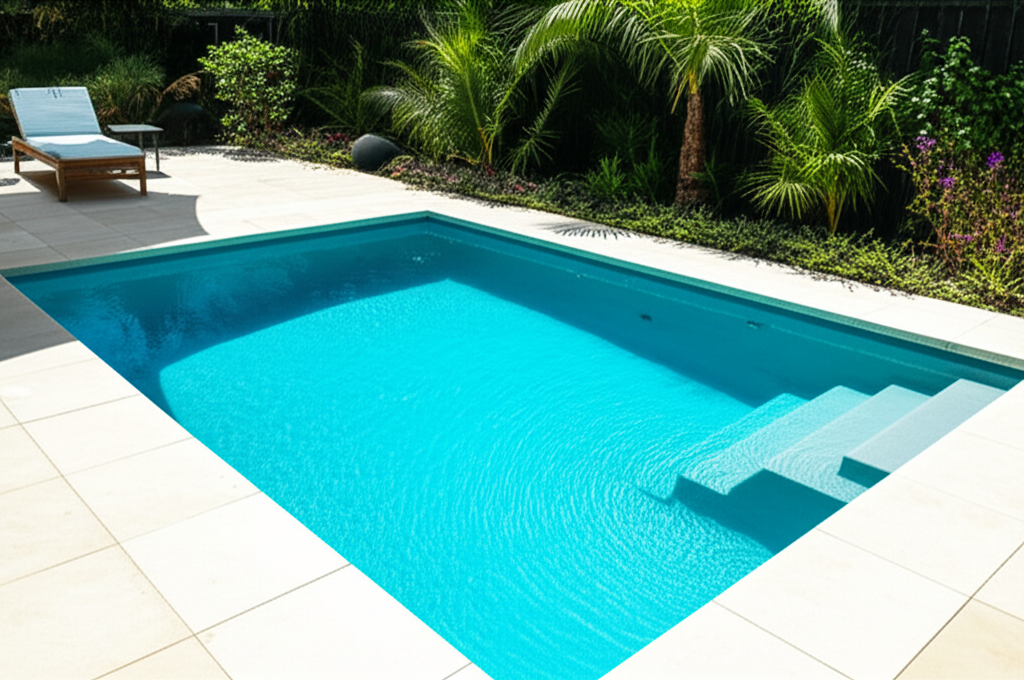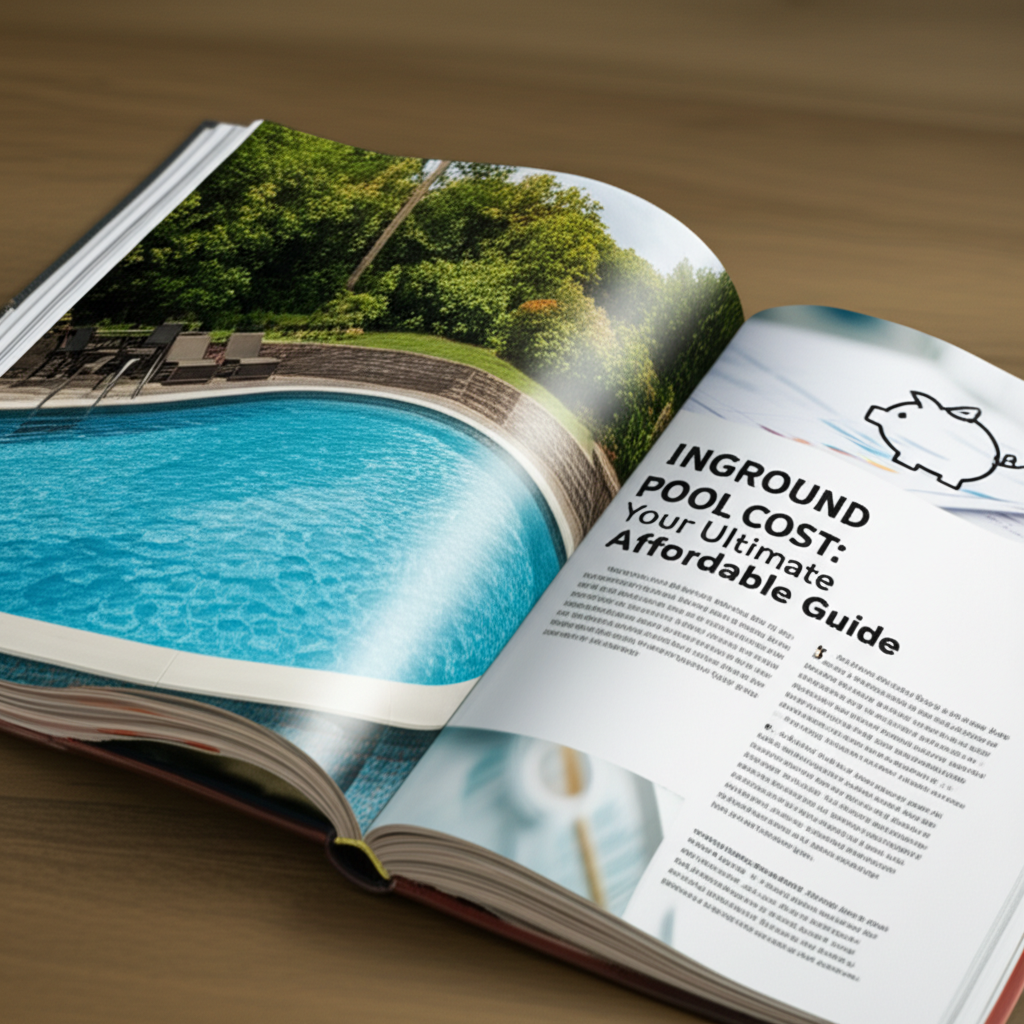- What Exactly Are Plunge Pools?
- The Allure of a Small Pool
- Enhancing Your Plunge Pool Experience
- Designing Your Perfect Plunge Pool
- Practicalities: Plunge Pools vs. Traditional Pools
- Your Personal Oasis Awaits
Plunge Pools: the epitome of compact sophistication, transforming even the most modest outdoor spaces into havens of relaxation and style. No longer just a niche concept, these intimate aquatic features are rapidly becoming a go-to choice for homeowners seeking the luxury of a personal pool without the sprawling footprint or intensive upkeep of a traditional one. Offering a blend of aesthetic appeal, functional benefits, and sheer indulgent pleasure, a small pool like a plunge pool or cocktail pool proves that grand experiences can indeed come in perfectly proportioned packages.
What Exactly Are Plunge Pools?
At their core, plunge pools are compact, often deep, pools designed primarily for cooling off, relaxing, and soaking rather than swimming laps. While there isn’t a strict definition for their dimensions, they typically range from 7 to 10 feet in width and 10 to 22 feet in length, though custom sizes vary widely. Their depth usually allows for full immersion, often between 4 to 6 feet, providing a refreshing escape on a hot day or a tranquil spot to unwind. Think of them as oversized spas, built into the ground or elevated, offering a dedicated retreat for therapeutic dips, hydrotherapy, or simply enjoying the water’s embrace.
The Allure of a Small Pool
The growing popularity of the small pool concept, encompassing both plunge pools and the lively cocktail pool, stems from a confluence of practical and lifestyle advantages. Foremost among these is their minimal spatial requirement, making them ideal for urban backyards, tight suburban lots, or even integrated into larger deck designs. This doesn’t mean sacrificing luxury, though; rather, it allows homeowners to lavish attention, and often a smaller budget, on exquisite finishes and surrounding landscaping that might be prohibitive for a full-sized pool.
Beyond space, maintenance is significantly reduced. Less water volume means fewer chemicals, faster heating (if desired), and less time spent cleaning. This translates to lower operating costs and more time enjoying your aquatic oasis rather than tending to it. For busy individuals or those keen on an eco-friendlier footprint, a plunge pool offers an attractive proposition, consuming less energy and fewer resources.
Enhancing Your Plunge Pool Experience
While their primary function is dipping, the potential for enhancing a plunge pool’s amenities is vast, transforming it into a versatile entertainment and relaxation hub. Integrated seating, such as benches or ledges, allows for comfortable lounging within the cool water. Water features like waterfalls, laminar jets, or sheer descents add soothing sounds and visual interest. Hydrotherapy jets can provide a spa-like massage, turning your plunge pool into a powerful tool for muscle relaxation and stress relief.
Heating systems extend the usable season, allowing for comfortable dips even in cooler weather, effectively turning it into a year-round backyard feature. For those evening soaks or social gatherings, ambient lighting, whether LED color-changing lights within the pool or subtle landscape lighting around it, creates a magical ambiance. When designed with built-in areas for drinks or a raised sun deck, these are often referred to as a “cocktail pool,” perfectly suited for intimate gatherings and stylish socializing.
Designing Your Perfect Plunge Pool
The design possibilities for plunge pools are virtually limitless, allowing them to complement any architectural style or landscape aesthetic. From sleek, minimalist concrete designs that blend seamlessly with modern homes to rustic stone-clad pools that evoke a natural, grotto-like feel, the choice of materials and finishes plays a crucial role. Concrete offers ultimate customization in shape and size, while fiberglass and pre-fabricated options provide quicker installation and often come with built-in features.
Consider how the pool will integrate with its surroundings. Will it be elevated, requiring steps or a deck surround, or inground, offering a more flush transition to the patio? The orientation relative to sunlight, privacy, and existing landscaping should also factor into the planning phase. Working with a skilled designer can ensure that your plunge pool is not just dropped into the space, but thoughtfully integrated to become a harmonious and inviting extension of your home.
Practicalities: Plunge Pools vs. Traditional Pools
When weighing the options, the contrast between plunge pools and traditional swimming pools becomes clear. A traditional pool calls for substantial space, a hefty budget for construction and ongoing maintenance, and significant utility costs. It’s built for swimming lengths, diving, and large family fun.
A plunge pool, on the other hand, prioritizes intensive relaxation and aesthetic integration over vast dimensions. Its smaller size means fewer excavation costs, less material, and a generally quicker installation timeline. While a traditional pool might dominate a backyard, a plunge pool often enhances it, leaving ample room for gardens, outdoor kitchens, or entertaining areas—transforming the entire outdoor living experience without overwhelming it.
Your Personal Oasis Awaits
Ultimately, plunge pools represent a shift in how we envision outdoor aquatic luxury. They are not merely smaller versions of larger pools; they are a distinct category, offering a refined, accessible, and sustainable solution for personal well-being and outdoor enjoyment. Whether you seek a tranquil spot for daily rejuvenation, a refreshing cool-down on a summer’s day, or the perfect backdrop for intimate soirées with friends, a small pool, designed as a plunge or cocktail pool, delivers stunning luxury, proving that sometimes, less truly is more.




